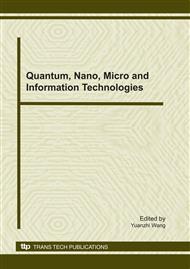p.312
p.317
p.322
p.326
p.332
p.338
p.342
p.347
p.352
On Mode Split Model of MAS-Based Urban Rail Transport Ridership Forecast System
Abstract:
Ridership forecast of urban rail transport is one of the important bases for urban rail transport network planning, design, construction and operation. MAS-based ridership forecast system was designed and the architecture was proposed. Forecast model is one of the important parts of Forecast Agent, and is the key technology to realize ridership forecast. The forecast model is established from the aspect of mode split model based on improved Fore-stage iterative feedback method. The mode split model includes three aspect of resident population, floating population and bus sub-way. The design of mode split model provides the prerequisite for the design and development of ridership forecast system.
Info:
Periodical:
Pages:
332-337
Citation:
Online since:
November 2010
Authors:
Keywords:
Price:
Сopyright:
© 2011 Trans Tech Publications Ltd. All Rights Reserved
Share:
Citation:


